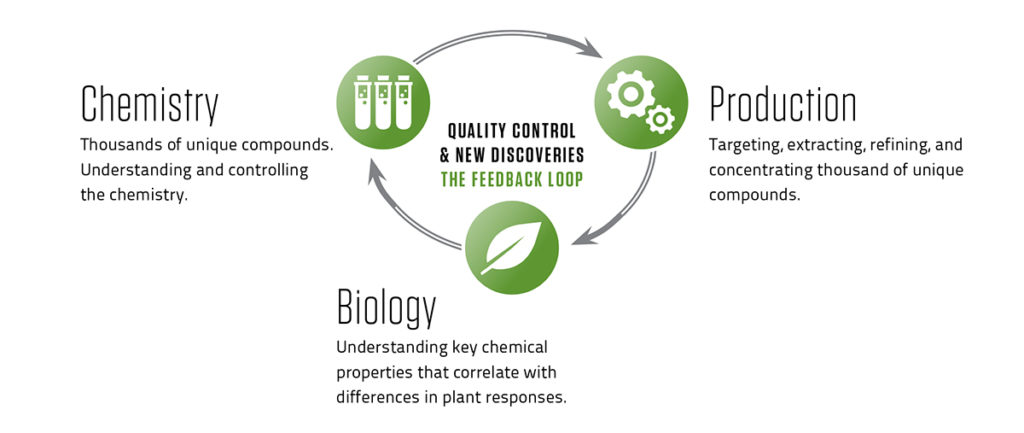When FBSciences was founded, the agricultural market had very little understanding of naturally derived technologies.
There was tremendous demand to understand, on a deeper level, the responses we saw in the field from products derived from natural compounds. In recent years, the knowledge of naturally derived technologies has seen tremendous advancements. This is especially true for the area of natural organic matter (NOM). There has been a quest to improve the ability to characterize and analyze samples of NOM. Previous generations of scientists were challenged to define adequately the chemical makeup of such vastly complex mixtures. Advancements in understanding, data analysis methods, statistical tools, and equipment have changed the paradigm concerning NOM chemistry, and we have been at the forefront of that transformation.
The science is everything.
When you have the tools to explain the science you start to change the conversation. The grower is no longer thinking about how this will affect this year’s crop. He starts thinking about how this new science could change his whole operation.
Natural Organic Matter
NOM is a broad term for the complex mixture containing tens of thousands of compounds derived mainly from decaying plant debris.
FBS Research Facility
Our research scientists work in a state of the art facility located on the campus of Old Dominion University (ODU) in Norfolk, Virginia. In addition to the FBS Lab, our researchers also use the College of Sciences’ Major Instrumentation Cluster (C.O.S.M.I.C.) Lab located on campus. This gives our team access to some of the most sophisticated equipment in the world.
The FBS Research Facility is one of a kind in the plant health space. In order to understand the chemistry, we assembled a team and set up a research facility in Norfolk, Virginia. This is what makes FBSciences unique. The amount of science behind our products is far beyond others in the space.
The Feedback Loop: Working with NOM
FBSciences is a science-driven company with an industry-leading team of scientists significantly advancing the understanding and control of naturally derived technologies and their impact on plant health. Our unique approach balances the chemistry of our technologies with plant biology and our production processes. We have made advances necessary to achieve a degree of quality control that has never before been seen for products derived from natural resources. Understanding the science is critical so that we can apply that knowledge to transform plant health through trials, learning, and product innovation. Our scientists lead the field in characterizing and understanding NOM, and this expertise and understanding are at the core of everything we do. There are three components to our science:

Chemistry
We started with the chemistry of our source material and the chemistry of NOM. The more research we did, the more we saw the power of the material. We also began to understand how incredibly complex it is. There were thousands of compounds that were hard to define. Fortunately, this field of science had recently seen significant advancements in understanding, data analysis methods, statistical tools, and instruments that opened up a whole new level of understanding. FBSciences has been at the forefront of this transformation in the understanding of the chemistry of NOM.
Production
We take what we have learned from the chemistry and biology aspects to improve our production process further. We target, extract, refine, and concentrate the most biologically active compounds that we know provide positive plant response and package that for use in the field.The process we use to produce our products is unique and changes the chemical composition of the source material into the FBS Technologies.
Target → Extract → Refine → Concentrate
Biology
Once we had a solid understanding of the chemistry, we turned our focus to biology. We wanted to know which compounds were driving the biological responses of the plants. We also needed to determine the proper rates and application timing to achieve the maximum economic value in the field. We discovered precisely which changes to the chemistry would elicit specific biological responses. We knew the younger organic materials were providing the biologically active compounds that were driving the results in the field. Still, we didn’t know why or how it was happening. Today, we know a significant amount and are able to assign biological responses in the plant to specific groups of compounds.
